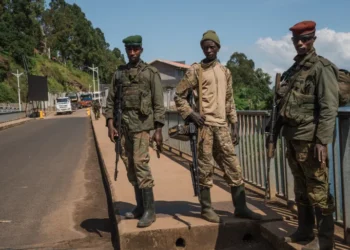Imagine cracked earth stretching as far as the eye can see, and communities desperately searching for water. This grim reality is becoming all too common across Africa as climate change fuels devastating droughts.
But in Kenya, there’s a glimmer of hope shining through the arid landscape: sand dams. These simple yet ingenious structures are changing lives, providing a lifeline for communities struggling against the dry spell.
Villagers construct a sand dam, a structure designed to collect water from rivers that only flow at certain times of the year. These dams, usually made of concrete, slow down the flow of water, causing sand particles to settle behind them. This creates a sort of underground reservoir that fills up when it rains.
In places, where rivers only flow a few times a year, and there aren’t many pipes or other ways to get water, many people rely on these rivers for drinking water.
By building sand dams on these rivers, people can scoop water from the sand or use hand pumps, which helps to prevent water from evaporating and replenish the groundwater.
This is becoming more important because climate change, caused by humans, is making droughts last longer, scientists say.
The idea of using sand dams has become popular in dry areas of Kenya and some other parts of Africa where people need a steady supply of water.
However, experts warned that it’s crucial to choose the right locations for these dams to make sure they actually work.

“When I think about sand dams, I feel happy,” said Rhoda Peter, a farmer. “Our shallow well does not dry. It goes all through the dry seasons.”
Before the sand dams were built, she and her children would walk several kilometers to fetch water in springs in the faraway Mbooni Hills. It took them three hours, and many times they’d fall because of the rocky terrain.
Water Woes in Kenya’s Dry Southeast
Many people in Kenya’s dry southeastern region rely on boreholes and rivers for water, but many boreholes produce saline water and permanent rivers are few and far for most people. Earth dams are another source, but they’re also few and require regular desilting.
At the Kasengela site, Mwanzia Mutua, who is leading the group building the dam, shared his story. He used to walk seven kilometers from his home to the Athi River every day to get water for his family and animals. This trek took up his entire day.
Eventually, a borehole was built, which made the journey shorter, but it was still quite far. Mutua explained that once the sand dam is completed, getting water will only take about 10 minutes.
“When water is far, you spend all your time looking for it and are unable to do any other work,” said the farmer. “Cattle die because the water is far.”
The sand dam in Kasengela was completed on March 14, 2024, after two and a half months of construction and should be ready to use by December 2025, after it fills with sand.
Only 5% of Makueni’s nearly 245,000 households had access to clean piped water by 2022. The county produces about 30,000 cubic meters per day against a demand of 60,000 cubic meters.
“The water situation in Makueni is dire,” said Mutula Kilonzo Junior, the county’s governor. “We have a huge deficit that we are not supplying.”
He said water shortages lead to problems for agriculture and health implications as people are forced to use unclean sources, taking the time and energy of children to fetch water, and affecting their education.
READ ALSO: Ecobank Ghana Spearheads Effort to Boost Exports Growth Under AfCFTA























